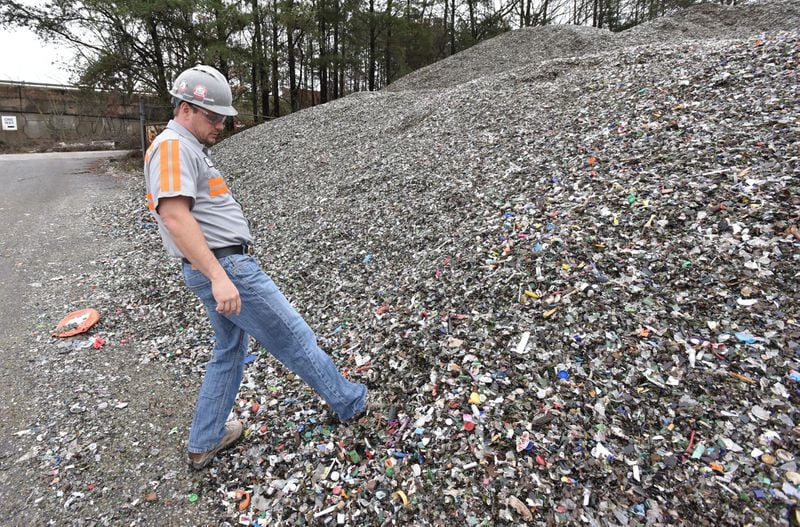Discarded crab shells and tree fibers hardly seem like the future of plastic packaging, but J. Carson Meredith, a professor of engineering at Georgia Tech, believes a new material made from those two components may be just that.
After two years of lab work, Meredith and a team of researchers developed a flexible plastic material made from natural, compostable materials, a development Georgia Tech announced July 23. Meredith hopes the plastic will serve the same purpose as common petroleum-based packaging while stopping the clogging of landfills and oceans.
The researchers did not start out trying to develop plastic at all. The original goal was to use chitin, found in shellfish, to create a natural pigment for paint, Meredith said. Soon, researchers noticed it was creating a clear film.
The team created a material composed of alternating layers of cellulose, found in plants, and chitin. The two are oppositely charged, Meredith said, creating distinct layers that keeps out oxygen, making it an ideal substance to preserve freshness.
Grocery stores and restaurants rely on plastic packaging to keep food fresh and cut down on waste. Most plastics used for packaging are a petroleum-based material known as PETs, Meredith said. These plastics do not naturally break down if they find their way to a landfill or water source.
In 2015, the latest year the Environmental Protection Agency has data for, 26 million tons of plastic were placed in landfills. Plastics accounted for 19 percent of all solid waste that was landfilled that year, according to the EPA.
Credit: Hyosub Shin
Credit: Hyosub Shin
While plastics remain essential for food retailers, their environmental impact is receiving a growing amount of attention, said Darren Seifer, a food and beverage industry analyst for the NPD Group.
Retailers and consumers alike, he said, are looking for the same products and standards while feeling “less guilty” about the environmental cost. Of course, Seifer said, sustainable packaging would become less appealing to consumers if it is not as cheap or effective.
The biodegradable plastic would not be as cheap as petroleum-based plastic right now, Meredith said. There is not enough scale and research on the manufacturing side to make it as cheaply. The materials, however, are widely available and not in high demand. Crab and shrimp shells, for example, are typically thrown away.
The packaging is competitive in its effectiveness. Tests show the packaging is at least as effective at keeping products fresh as high-grade PETs and more effective than low-grade PETs, Meredith said.
Overall, the material is still in its early stages. Meredith said his team still wants to continue to improve it, further testing its ability to hold up to water and humidity. The plastic will also have to be approved by the Food and Drug Administration before it can be used for packaging food.
In order for the plastic to have a place in the market, Meredith said the researchers will most likely have to team with a manufacturer to produce it. Meredith believes it will require at least a five-year investment to get the product on the market.
Still, Meredith said the material is worth the investment. He sees a future where the use of petroleum-based plastic falls off as consumers seek alternative products.
“Ultimately, society is going to demand more sustainable options, and things that don’t accumulate in landfills,” Meredith said.
About the Author






